Nesting Osprey

Yamba, on the Clarence River in northern NSW, is quite an exceptional place. The Clarence estuary includes numerous vegetated islands, deep channels, sandy shallows, and extensive areas of intact mangroves. The town is flanked by coastal national parks of heath and forest, and there are also pockets of littoral rainforest.
As a result, the bird life here is extraordinary. It is a stronghold for shorebirds such as the Pied Oystercatcher, the birds taking advantage of dog-free nesting beaches on the river islands. As do a pair of Beach Stone-curlew. And the sandbars at low tide show how important this place is to migratory shorebirds. On one previous visit we counted 56 Eastern Curlew (sadly, a now 'Critically Endangered' species in Australia, due mainly to habitat loss in their migratory stopover sites in east-Asia), and 90 Bar-tailed Godwit, along with Grey-tailed Tattler and Whimbrel.
The raptors are no exception. White-bellied Sea-eagles, Brahminy Kite, Whistling Kite - and Osprey!
My parents' waterfront home affords the rare privilege of seeing these birds regularly, and at close quarters. And this year, for the first time, the birds have built their nest right here!
Pandion cristatus - Eastern Osprey. The larger female is on the right, with her distinctive, brown-tinged necklace.
The pair commenced building just three weeks ago (9th July) and have already constructed this impressive 'basket' of sticks. The nest is atop an elevated platform. This was purpose-built for them several years ago, but until now they only used it as a perch and feeding platform.
We know this pair have nested successfully in previous years. They had a large nest on a telegraph pole about 1km away. It's unclear why they chose to move - perhaps the trees alongside the other nest were starting to grow too tall. Ospreys tend to favour sites with a clear view in all directions.
Construction is continuing. The birds can haul surprisingly large sticks and branches, taking advantage of their massive talons. They use only dead and dried branches, collected from the high tide area of the river banks.
Once deposited, each stick is carefully manoeuvred into position. Not always successfully though - the littered ground below the nest is testament to that! But the elaborate 'basket-weaving' they do achieve seems remarkable to me.
Major construction has slowed from the frenzied pace reported in the first weeks, however, and interior fit-out is now well underway. The birds are collecting clumps of dry seagrass and packing this into the floor of the nest.
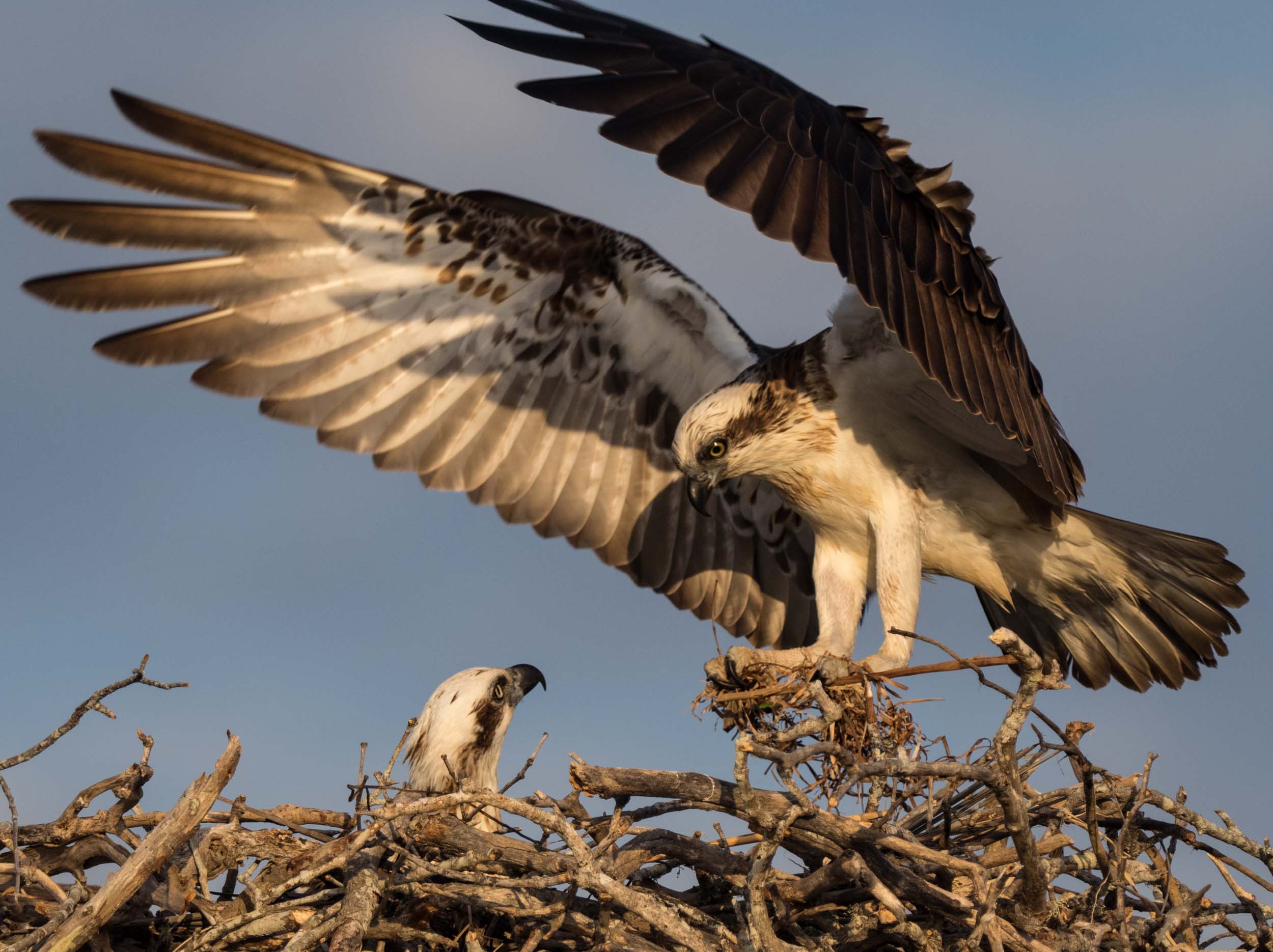
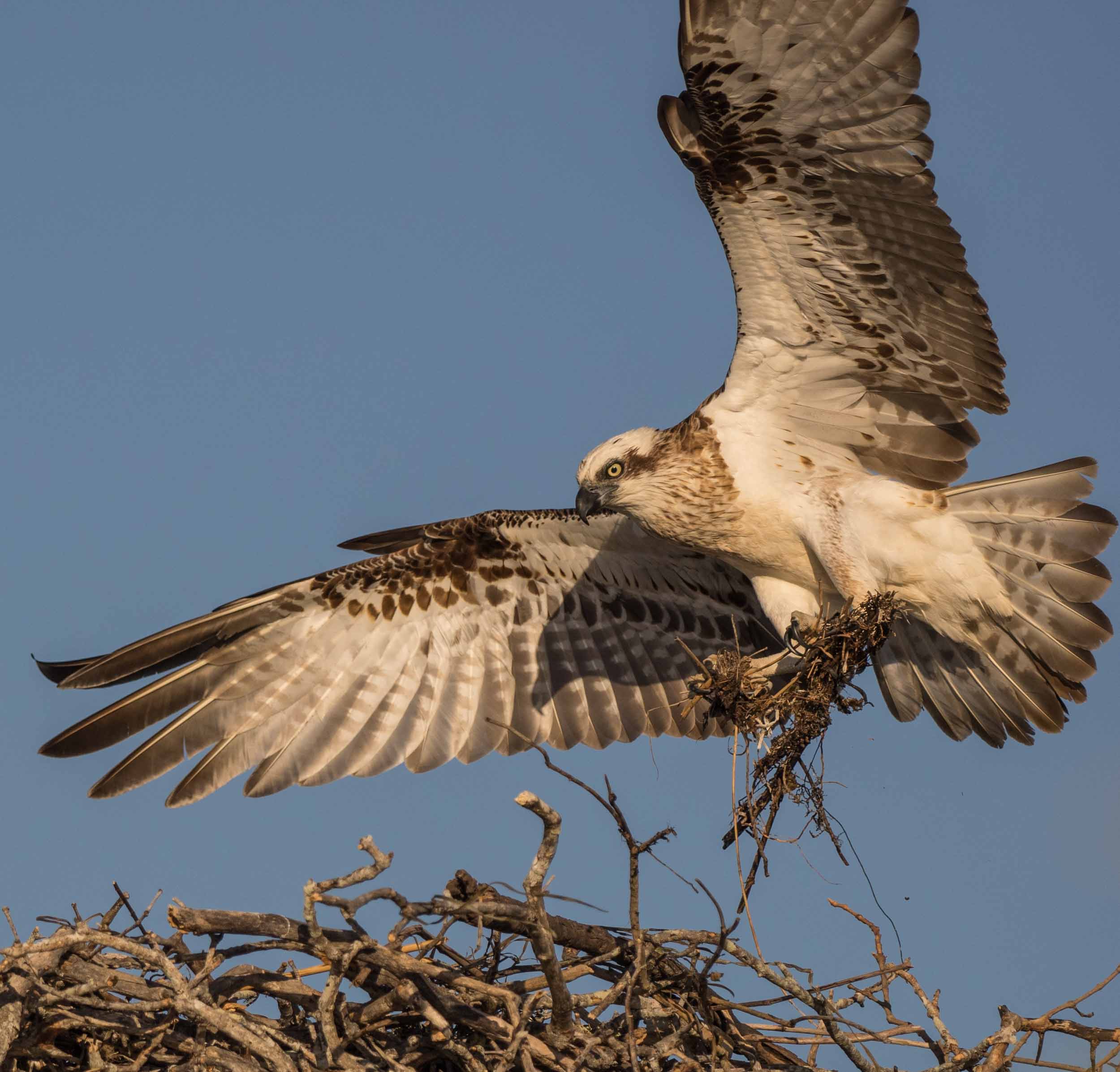
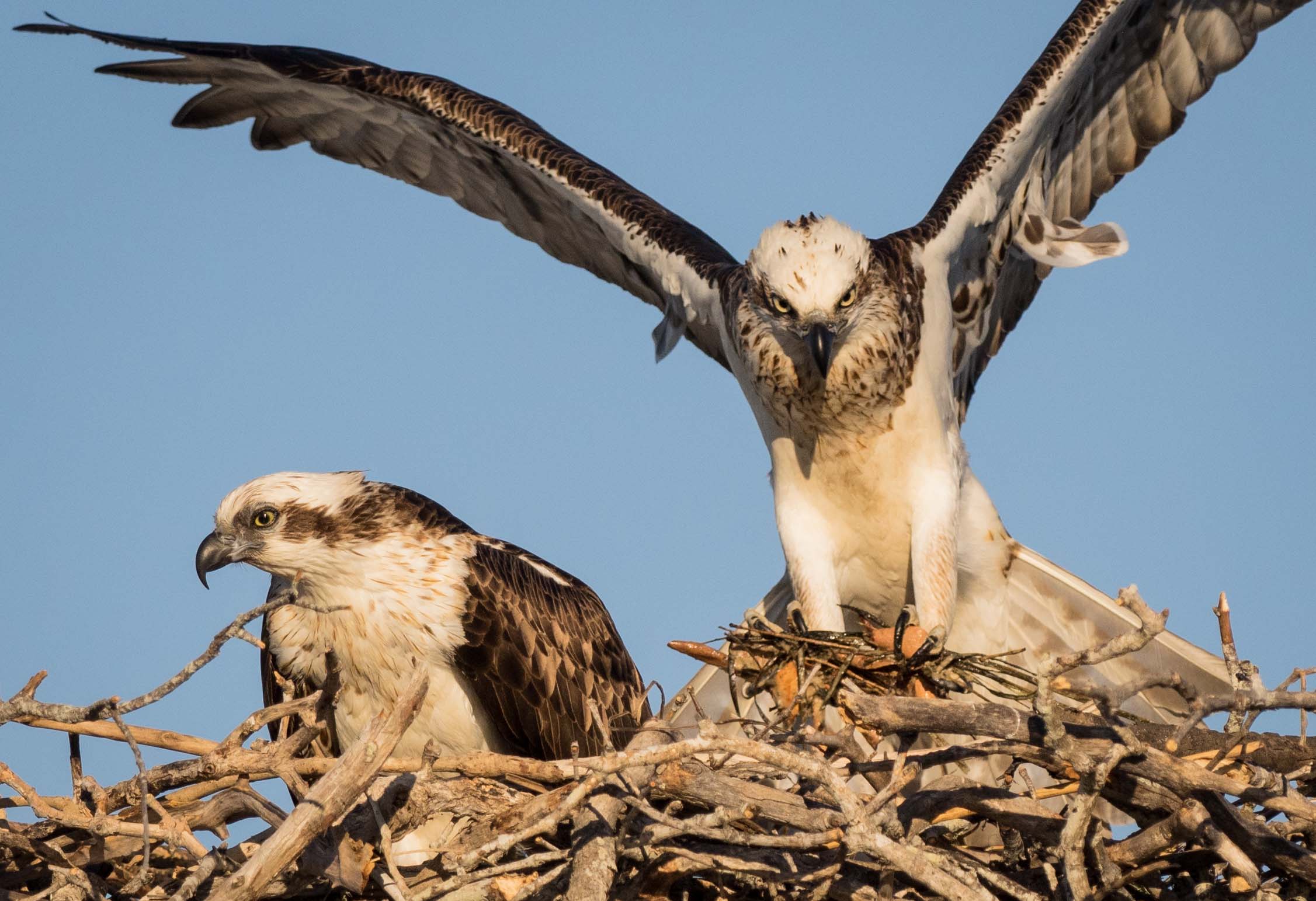
We've also witnessed a good deal of mating behaviour at the nest. Bit of a balancing act, with a show of wings as the male perches atop the female's back. Seems to be a lot more 'practicing' than actual mating - but the real thing is no doubt imminent.
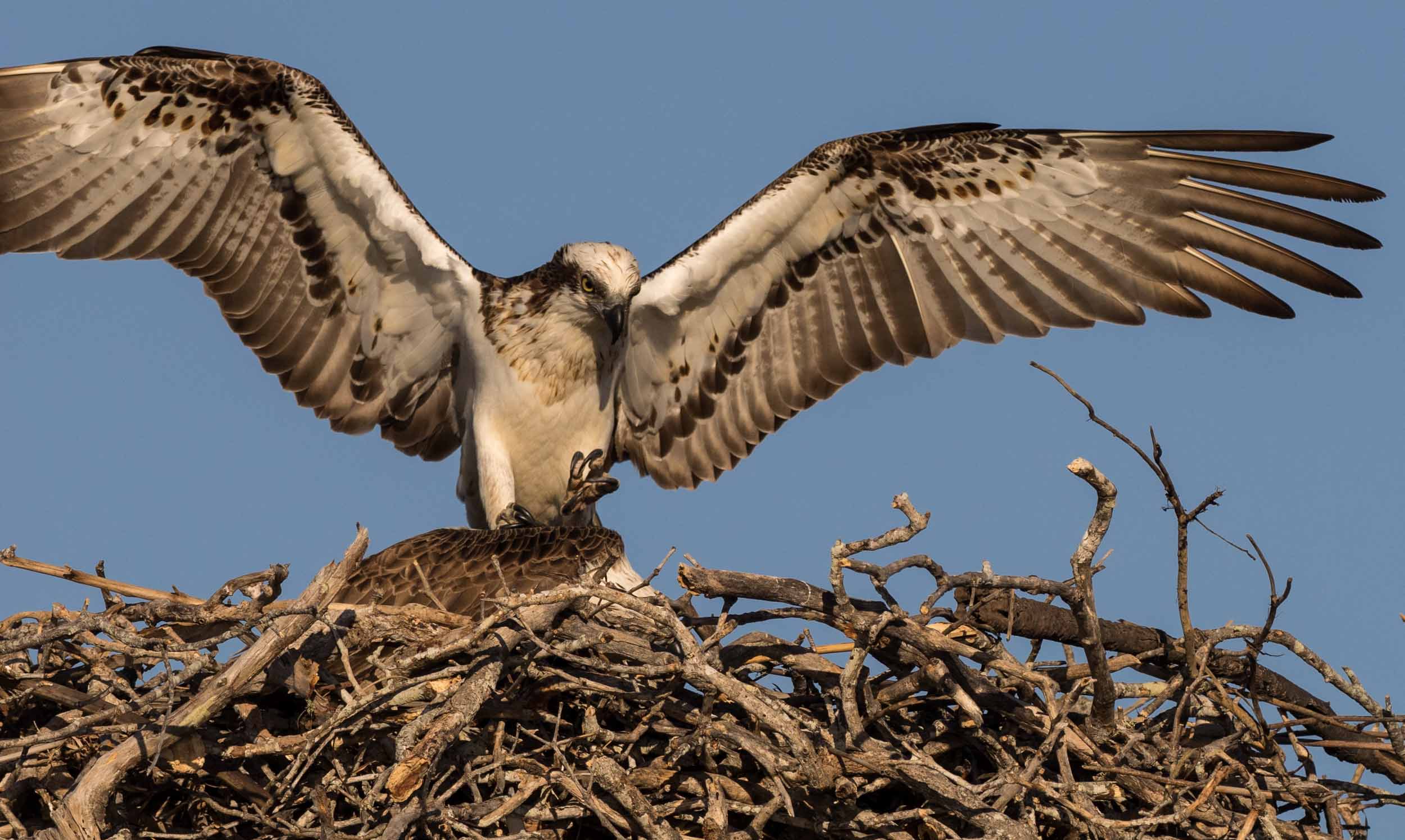
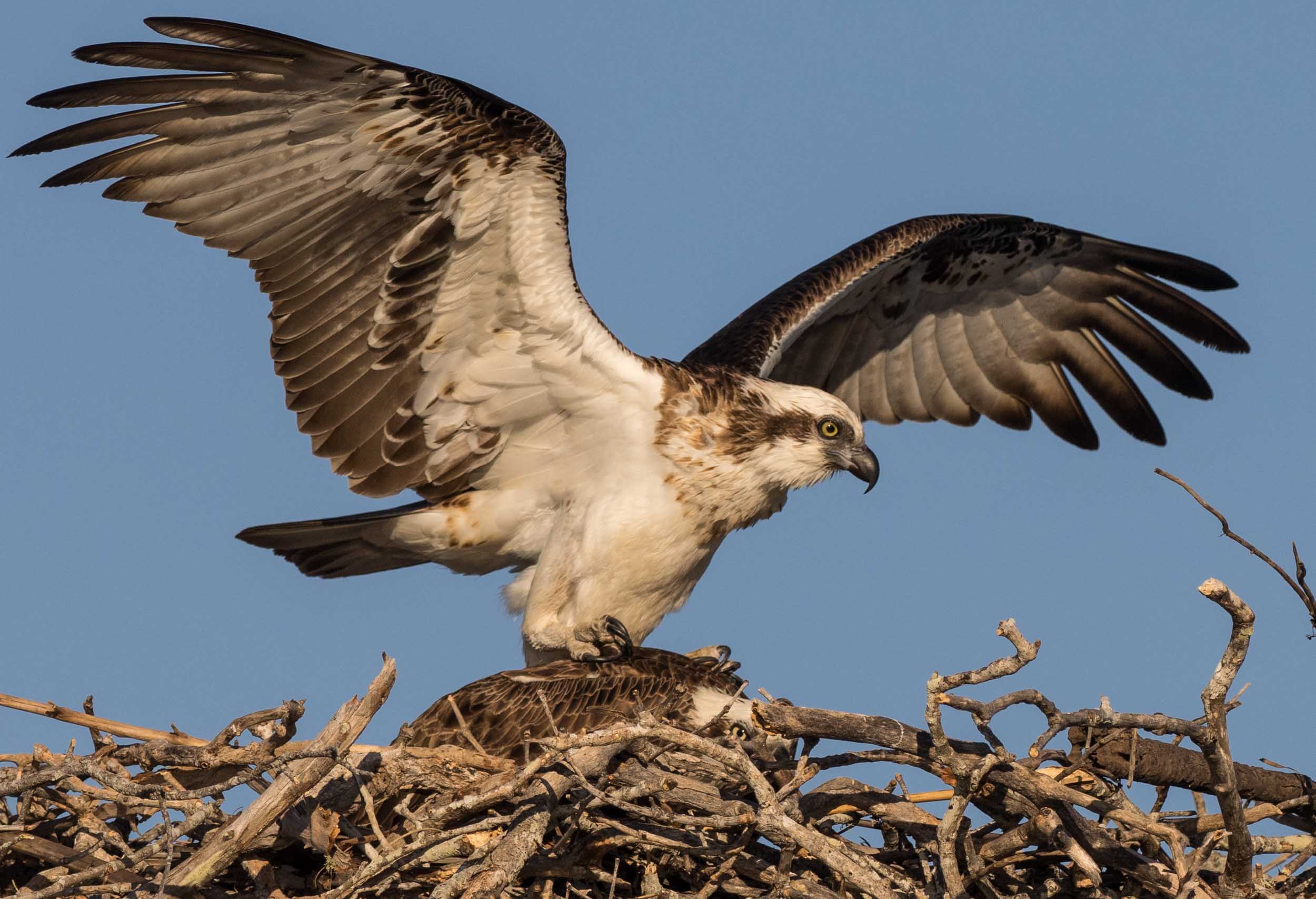
The male has to be very careful with his huge talons, and as a result can't actually get a good grip.
The flagpole alongside the nest affords views of the river - and provides another opportunity for courtship. The female's tail is often raised, suggesting a willingness to mate.
The female (below) is trailing nesting material from her legs. She is slightly larger than the male, but otherwise quite similar. The two can be difficult to distinguish at times.
Once the eggs are laid, it will be about 5 weeks to hatching and 7-11 weeks to fledgling.
Osprey are cosmopolitan. In Australia they are concentrated in the north and east. The population suffered a decline but has been recovering for the past couple of decades. Overall, the Australian population is considered 'Secure', but the birds in NSW remain in the 'Vulnerable' category.
IMPORTANT NOTE ON THE ETHICS OF PHOTOGRAPHING NESTING BIRDS:
We abide by the principles of ethical birding espoused by 'Birdlife Australia' (click here) and the even more specific Policy regarding nesting birds documented by 'Birdlife Photography' (click here). We feel it is important, therefore, to explain how we came to be in a position to take this series of photographs.
The situation in which we are able to observe these nesting birds is an exceptional one. The Osprey have constructed their nest just a few metres from my parents' house, in the yard. The birds have been almost resident here for years, using the flagpole and raised platform as perches and feeding sites on a daily basis. The roof of the house next door is currently whitewashed and strewn with fish. Having taken over the platform as a nest site, the birds are now doing most of their feeding on the neighbours' grey-tiled ridge capping!
All these photos were taken while I was seated on the ground level verandah of the house, not approaching the nest nor disturbing the birds in any way. Both birds are clearly untroubled by the presence of people and have selected this nest site despite being close to buildings, people, passing boats, and even lawnmowers!












